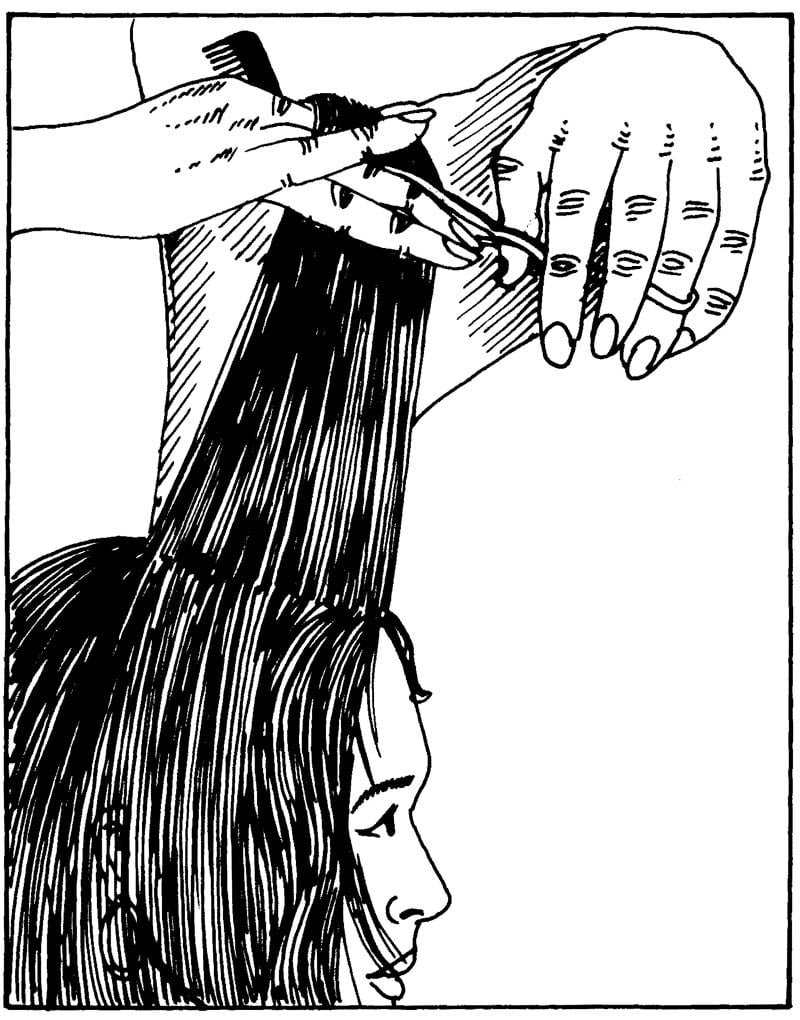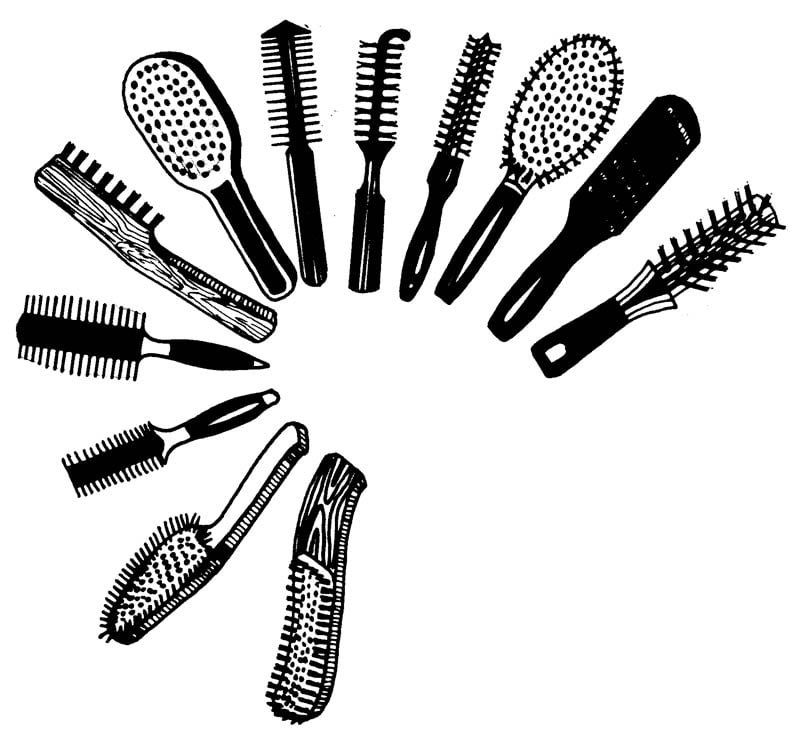What wrinking is to skin, greying is to hair. Both are the signs that herald age. A woman despairs as much over the wrinkles that begin to line her face, as she does over the hair that turns white. This feeling of regret, for the youthful years that have passed is nothing new. In fact, the effort to retard the ageing process has existed since Eve. Beauty treatments, geared to delay or cosmetic world. Ageing, however, is a natural process. With time, the body ages and the signs of ageing manifest themselves in various ways—greying of hair is one of them.
To understand the greying process, one must have a basic idea of the structure of the hair. The hair consists of concentric layers. The outermost layer is the cuticle, which is made up of tiny, transparent scales that overlap each other. The second layer is the cortex. It is in the cortex, just below the surface layer, that pigment, darker the colour of the hair will be. With age, pigment may not form, causing hair to be without colour or white. There may be other reasons why pigment may fail to form, but age is the most common factor.
The white strands mix with the dark ones and give the impression of grey hair. Naturally, when white strands appear, the question of how to deal with them causes much concern, not just from the aspect of concealing them, but also checking further greying. This question makes it important that few facts about the hair be known, so that damage to the hair is minimal.
To begin with, the strands that have already turned white cannot become black or dark again. The only way to change their colour is by dyeing. Dyeing, in fact, has become a common practice and a number of women resort to it. Unfortunately, most of them do not know the way the structure of the hair can be affected. Unless this is known, one is not able to take precautionary measures that help to control damage to the hair. Dyeing or colouring hair is not a modern beauty device. Women of ancient Rome and other civilisations were known to dye their hair, or even bleach them, using ingredients that often caused irreparable damage.
The chemical dyes and colourants that are in use today can also harm the texture and health of the hair. They contain ingredients that penetrate the cortex, resulting in damage to the texture. Regular dyeing, therefore, results in hair that is dry, brittle, rough and without lustre.

If hair damage is to be checked, it is essential to set up a protective care routine, as protection itself is one of the best preventive treatments. It has also been seen that regular care, started in good time, not only delays greying, but can also prevent it from spreading. These treatments include the use of products, containing natural hair darkening and protective agents, that have the added capacity of improving and maintaining the health of the hair.
If the decision is made to dye hair with chemical dyes, it is all the more important to treat hair regularly with natural products, in order to protect the hair from harmful effects of chemicals and keep hair damage to the minimum. Dye your hair, if you must, but help to restore its beauty in terms of texture, quality and quantity.
Nature of Hair Dyes
One of the main advantages of using natural hair dyes and colourants is that they are completely safe and subject the hair and scalp to no hazards. Natural vegetable products are non-toxic and do not harm the structure of the hair. They do not destroy the outer layer or cuticle, as they do not enter the cortex. Henna is probably the best known natural colourant. It has the capacity of strengthening hair, as it coats the hair shafts. This not only protects hair, but gives it body and sheen. If there are only a few white strands which are visible there is no necessity to use chemical dyes. Henna can be used very effectively to conceal them.
Coffee or Catechu added to the henna paste gives hair a richer brown colour rather than a reddish tinge. The coloured strands blend with the rest of the dark hair and are well concealed. A question that is commonly asked is whether henna will colour the entire hair a flaming red. The answer to this is very simple. Dark hair will not catch a lighter colour and will not be coloured red. Henna will, in fact, add gloss and brighten dull hair.
Special henna powders, containing other valuable ingredients like amla and khol are available. They have been used very successfully both as protective and preventive treatments, apart from curing many hair disorders. Regular applications of henna will not only conceal but provide many other benefits. If there are a considerable number of strands that have already turned grey and you decide to dye them black, you should have a basic idea of the process that is involved.
Chemical dyes have a toxic base and have been known to cause irritations and allergies. The hairdresser will therefore do a patch test before dyeing your hair. This is usually done by applying the dye on a tiny area just behind the ear. A period of 24 hours must be allowed to see if any skin irritations or allergies are caused. If not, the dye may be used. It is better to have the hair dyed by a hairdresser, as there are particular instructions that must be followed regarding the lotions used and proper care must be taken. No attempt should be made to dye eyebrows or eyelashes with these dyes.
Fin hair can be dyed easily as it absorbs better, while coarse hair is more resistant to colour. This itself would require the use of more and more quantities of the dyeing lotion as time goes on, since dyeing makes hair coarse, with repeated applications.
Shampoos
Shampoo, rinse, tonics and conditioning powders, containing ingredients like henna, amla, shikakai, reetha and ‘brahmi’ have proved successful in maintaining the hair texture and health. These ingredients also have specific curative properties.

As far as the daily routine is concerned, the hair should be washed with a very mild shampoo is ideal, as not to subject it to harsh detergents. An amla shampoo is ideal, as it lubricates dry hair and has a powerful cleansing action without disturbing the oil moisture balance. It also restores the acid-alkaline balance of the scalp. Amla keeps the hair soft and shiny and checks further greying. The harsh ingredients in chemical dyes remove natural oil and moisture, leaving both the hair and scalp very dry. A hair rinse, used with shampoo, completes the hair washing procedure and leaves hair in manageable condition. Regular conditioning treatments with henna improves both the look and the general health of the hair. Thus hair that is dyed requires special care, so that the damage may be reversed to a great extent.
One of the most important aspects of beauty is to be aware of the detrimental effects of various treatments. Some treatments can have disastrous results, involving a great deal of time, effort and expense to gain what is lost. In some cases, damage may be permanent. As far as possible, avoid treatments that expose the hair and skin to harm. For instance, when you feel you must resort to such methods, be sure to supplement them with an appropriate routine of daily care, so that the natural beauty of such valuable assets may be preserved as long as possible.

